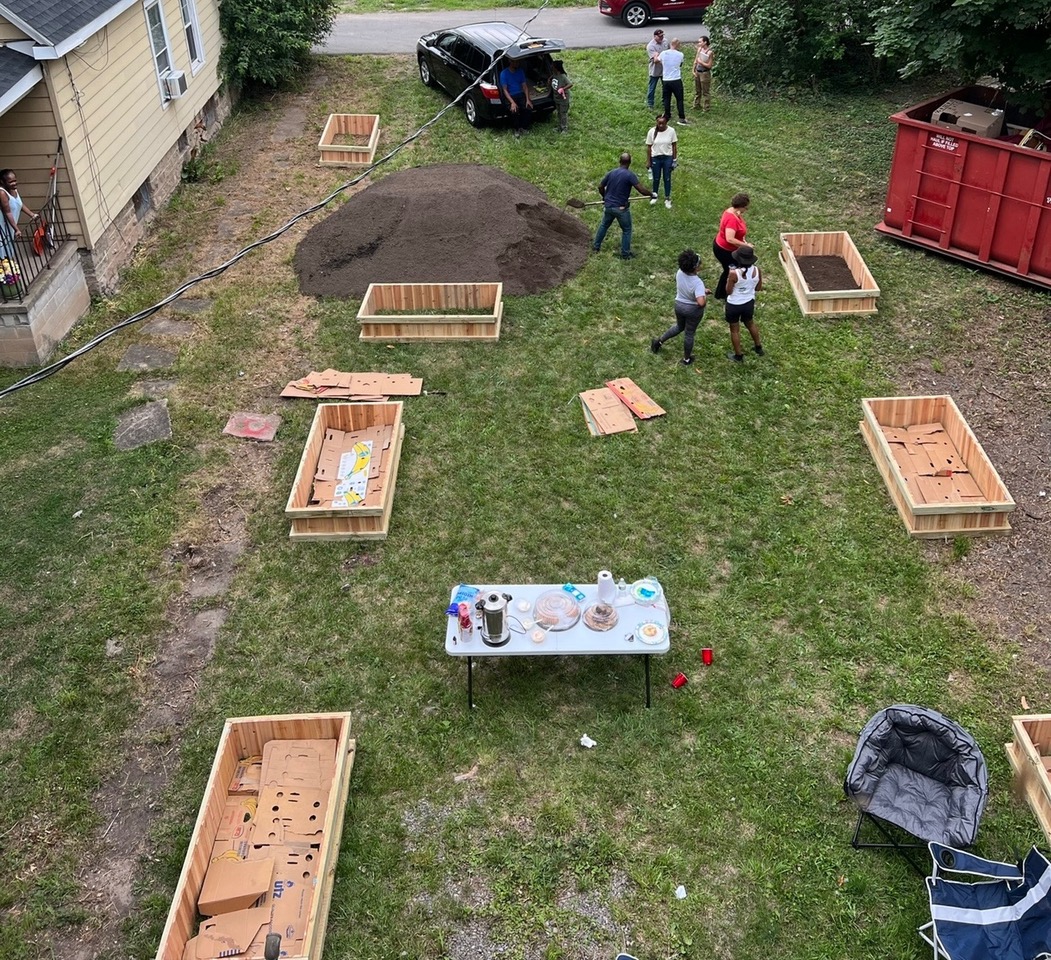This Association Means to Give Dark Ranchers Capital
The Dark Rancher Asset is attempting to reclassify riches and wellbeing in New York people group by putting resources into Dark horticultural frameworks.
At the point when rancher activists Olivia Watkins and Karen Washington met at a gathering in 2017, they perceived there weren't any projects outfitted towards Dark ranchers that tended to their financial necessities. So they set off on a mission to fill the hole.
"Ranchers have a single opportunity in a season to hit the nail on the head. There were extraordinary associations teaching Dark ranchers, however there was not an association pooling capital and giving it through an award or a credit to Dark people to close the racial abundance hole," says Watkins. "There's no motivator to Dark ranchers to take care of African American populations."
While a great many people realize that oppressed Africans were brought to America to accomplish the difficult work of building a country, maybe it is less notable that in addition to the fact that their actual work wanted yet in addition was their rural information and expertise in developing the land. After the Nationwide conflict, African Americans kept on developing harvests either as tenant farmers or by claiming the land they cultivated inside and out — a long time back, they made up 14% of the nation's ranchers. Today, Dark ranchers address just 1.4 percent of the business.
How much Dark ranchers in the US has been on the downfall for a really long time. As per the USDA, the quantity of Dark ranchers crested in 1910, when they claimed an expected 16 to 19 million sections of land. That number has dropped to under 3,000,000 sections of land today.
Despite the fact that there is various elements for this downfall, the significant causes are foundational administrative bigotry and absence of admittance to funds.
Not long after their gathering, Watkins and Washington sent off the Dark Rancher Asset, which invited its most memorable accomplice of beneficiaries this year. The asset gives capital and assets, for example, business instructing to Dark ranchers. The association means to create local area power and financial wellbeing, while at the same time attempting to move and meaningfully have an impact on the manner in which food equity occurs.
It's significant work on the grounds that, as indicated by Watkins, the typical pay for an American rancher is $42,000 each year, while the typical pay for a Dark rancher is - $906 each year. The monetary difference makes bigger issues than only an absence of Dark ranchers. "For this reason there is food politically-sanctioned racial segregation in specific networks," says Watkins. "For this reason we are so detached from our food, on the grounds that our networks are not delivering food, and the ones that are creating are battling."
The Dark Rancher Asset was particularly significant during the pandemic, when Dark ranchers were hit hard financially. Watkins saw the need to make a crisis alleviation store where ranchers could get to capital rapidly. So they sent off a unique award to settle individual or business obligation, help with work expenses or buy gear and foundation like nurseries. "Cultivating is a difficult encounter. There were a great deal of crises occurring locally and we didn't maintain that individuals should plunge into their speculation capital," says Watkins. Furthermore, a quick reaction store for ranchers who were not in the asset's portfolio was made to circulate financing on a more extensive scale.
The degree of care and commitment is important for what drawn in rancher Denise Scott of 716CBD and Dark House Producers to the Dark Rancher Asset. Part of the primary accomplice of beneficiaries that incorporates ranchers, cultivators and groups from across New York state, Scott contrasted the Dark Rancher Asset staff with feeling like family. "As you begin to meet individuals in the background, you begin to develop a family with them… A portion of these individuals have remained in my home," she says. "We experienced childhood in this as a family."
Situated on the New York side of Niagara Falls, Scott's 716CBD is a comprehensive recuperating space where she makes and sells margarines, colors, salts and scours. Her microfarm, Dark House Cultivators, involves only one-10th of a section of land, and each inch is covered with mint, chamomile, tomatoes, cabbage, celery, cucumber, peppers, kale and collard. She intends to add blossoms and yams, as well. Eventually, Scott needs to possess 100 sections of land and give a portion of the land to the Dark Rancher Asset. "It generally returns to the earth," says Scott. "At the point when you begin discussing ranch to table — that is supporting all alone."
Scott has authentic family binds to cultivating also. Her dad was a rancher in North Carolina, and when she began finding out increasingly more about food equity and deficiencies, she realized she expected to begin cultivating herself. "I began seeing Individuals of color having the option to maintain and how could we be ready to support preceding this. Everybody's mom had a nursery in the terrace," she says. "I returned to how my precursors helped hundreds of years."
The Dark Rancher Asset's most memorable companion likewise incorporates: Dark Yard Homestead Aggregate, an aggregate of Dark ranchers that makes space for the local area to find out about cultivating; Trinity Ranches, a little natural product plantation in Clintondale, New York; and Ranch New Caribbean Cultivators, which delivers elusive Caribbean produce in New York. Altogether, the association gave subsidizing to eight homesteads, and the developing interest for training about cultivating in neighborhood networks and the expanding of the horticultural space to Dark ranchers underlines that there is even more work to be finished.
Indeed, even with every one of the hindrances that Dark ranchers face, there is as yet bountiful expectation. "Dark ranchers are staggeringly tough, gifted and skilled individuals," says Watkins. "That tribal ancestry of is being agrarian specialists and supporting networks."

Comments
Post a Comment